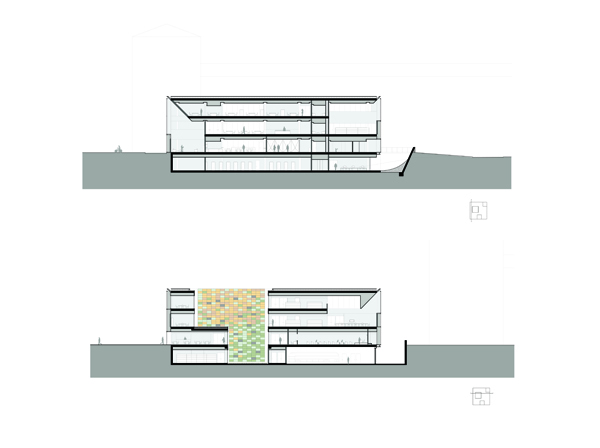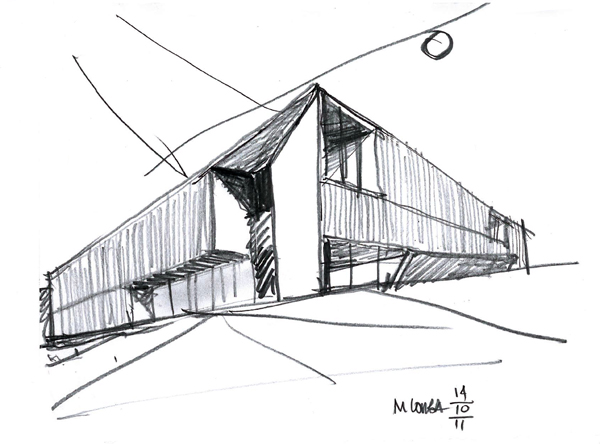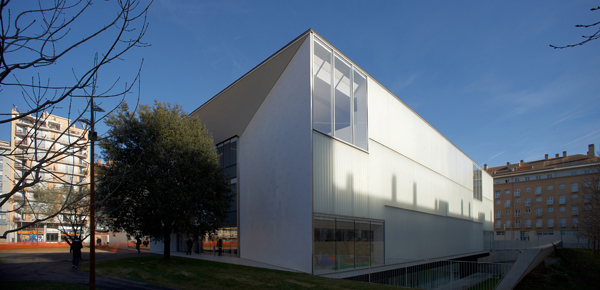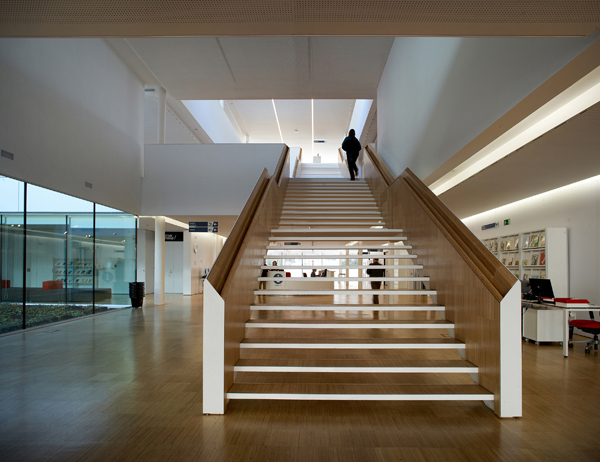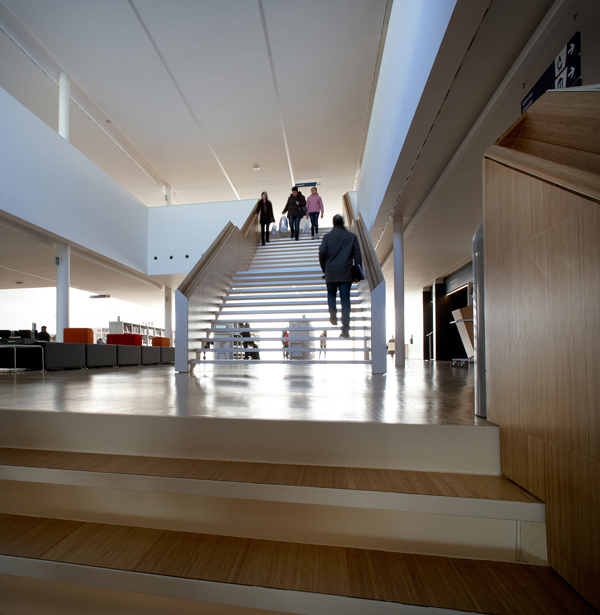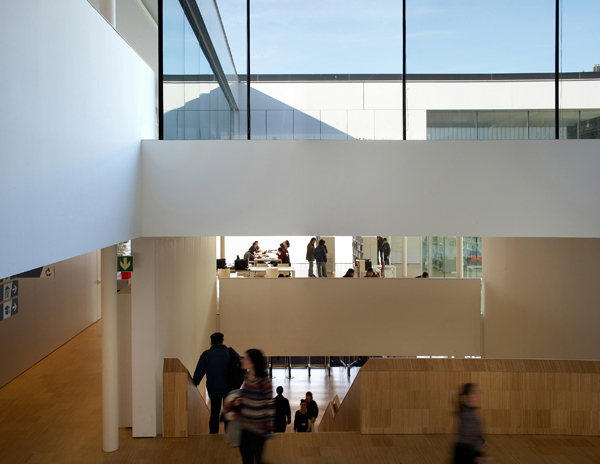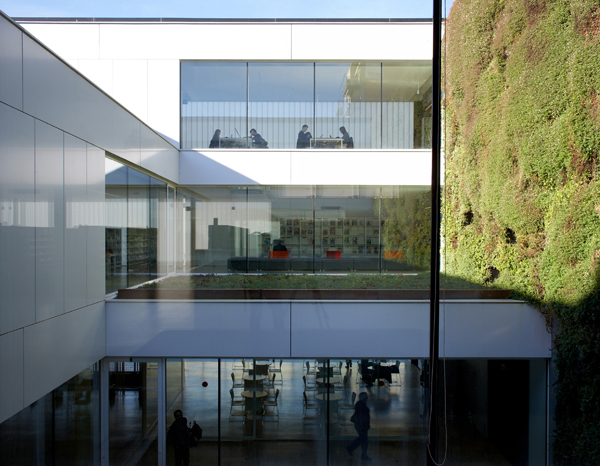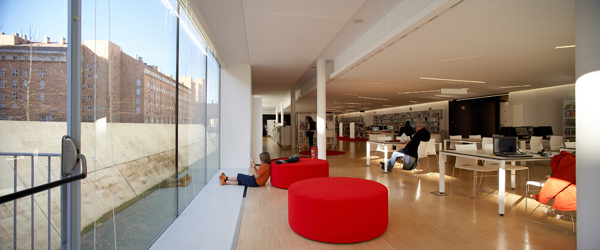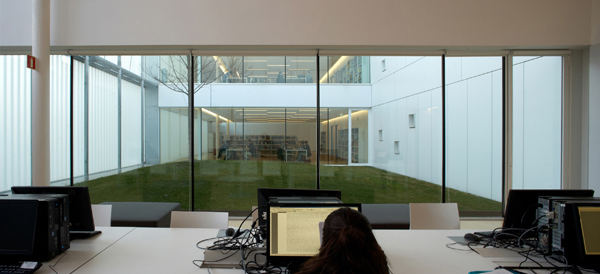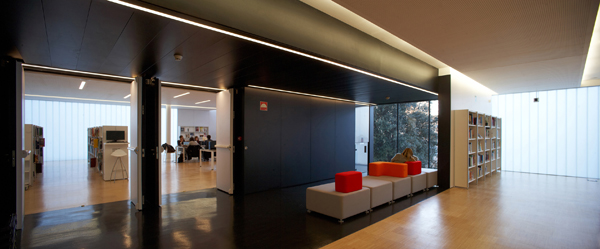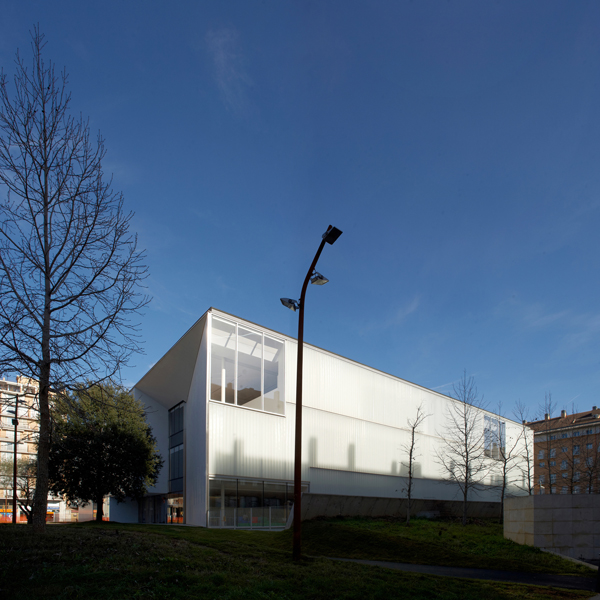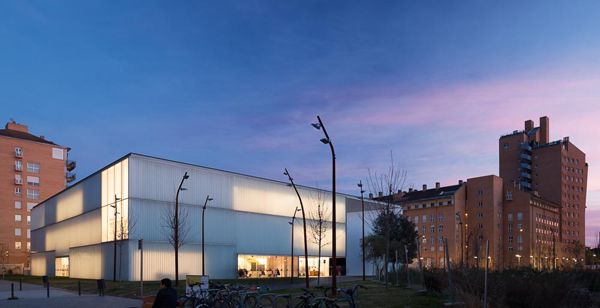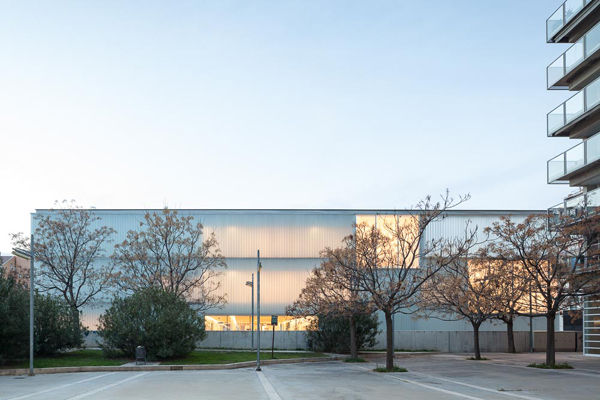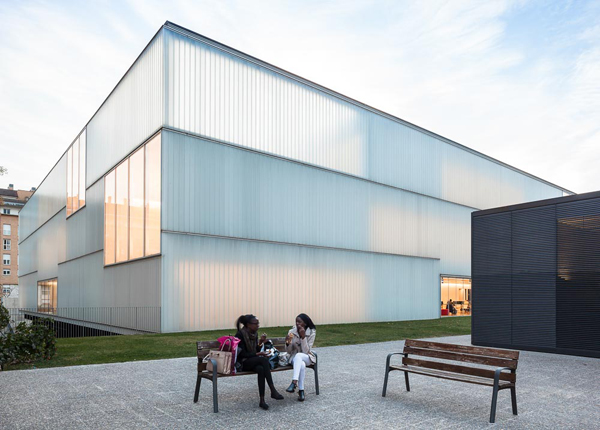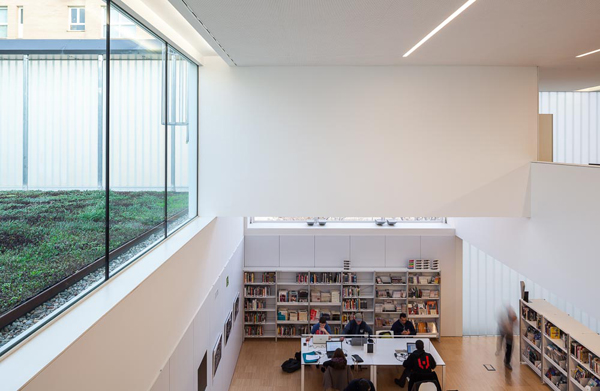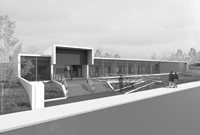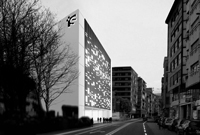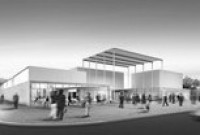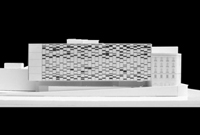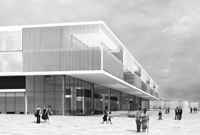Work
Project
Carles Rahola Public Library in Girona
- Location: Girona, Catalonia, Spain
- Typology: Institutional
- Completion: 2014
- Surface built: 8072 m2
Coauthors
Mario Corea
Lluis Moran
Sebastian Guerrico
Collaborators
Marina Correia
Andre Mota
Consuelo Koch
Lorena Airasca
María Soledad Diaz
Victor Moita
Cesc Buixó
Berta Masnou
Structural Engineer
David García / BIS Arquitectes
Mechanical Engineer
Eduard Bou / K2
Construction
Copcisa
Photo credit
Pepo Segura
Marc_Torra-Fragments
—
The new library is located in the center of Girona. Bounded on the north by busy Avenue Emili Grahit, the site is embedded in a dense neighborhood of tall residential blocks. These urban conditions – plus the fact that this is the largest library in the network of public libraries in Catalunya – contributed to the development of a design strategy based on two main considerations.
First of all, given its civic and cultural importance the decision was made to differentiate the library from the surrounding residential fabric both in terms of its form and the materials.
Secondly, while the design responds to the new programmatic challenges of today’s library as a place of social interaction for young and old, it also reclaims the traditional role of the library as a place for reading, study and quiet reflection.
The different functional areas have been distributed over the building’s four floors according to the corresponding user groups and activities. Visitors enter from the new public plaza into the open and dynamic ground floor that contains the children’s library along with spaces for community activities. On the upper two floors there are reading rooms and specialized areas of interest. The administration area is located on the basement level where access is limited to the library personnel.
A large open staircase connects the three public levels. In addition to allowing for fluid vertical circulation, the staircase is a key element for understanding the spatial continuity inside the library, which is organized around three internal courtyards. While the transparent glass walls convert all the courtyards into sources of natural light as well as gardens that are extensions of the interior spaces, each one assumes its own identity.
The principle protagonist of the library is the light in its many variations. The square-shaped volume is almost entirely glazed in U-Glass punctuated by sections of transparent glass, flooding the interior with a diffuse light especially comfortable for reading while framing views of the surrounding neighborhood.
At night the library glows like a giant urban lantern, welcoming everyone to enter and become part of this place for knowledge, culture and community life.
The sustainable aspects are an integral part of the design concept and the library received the ‘Class A’ energy certification of the European Union.


